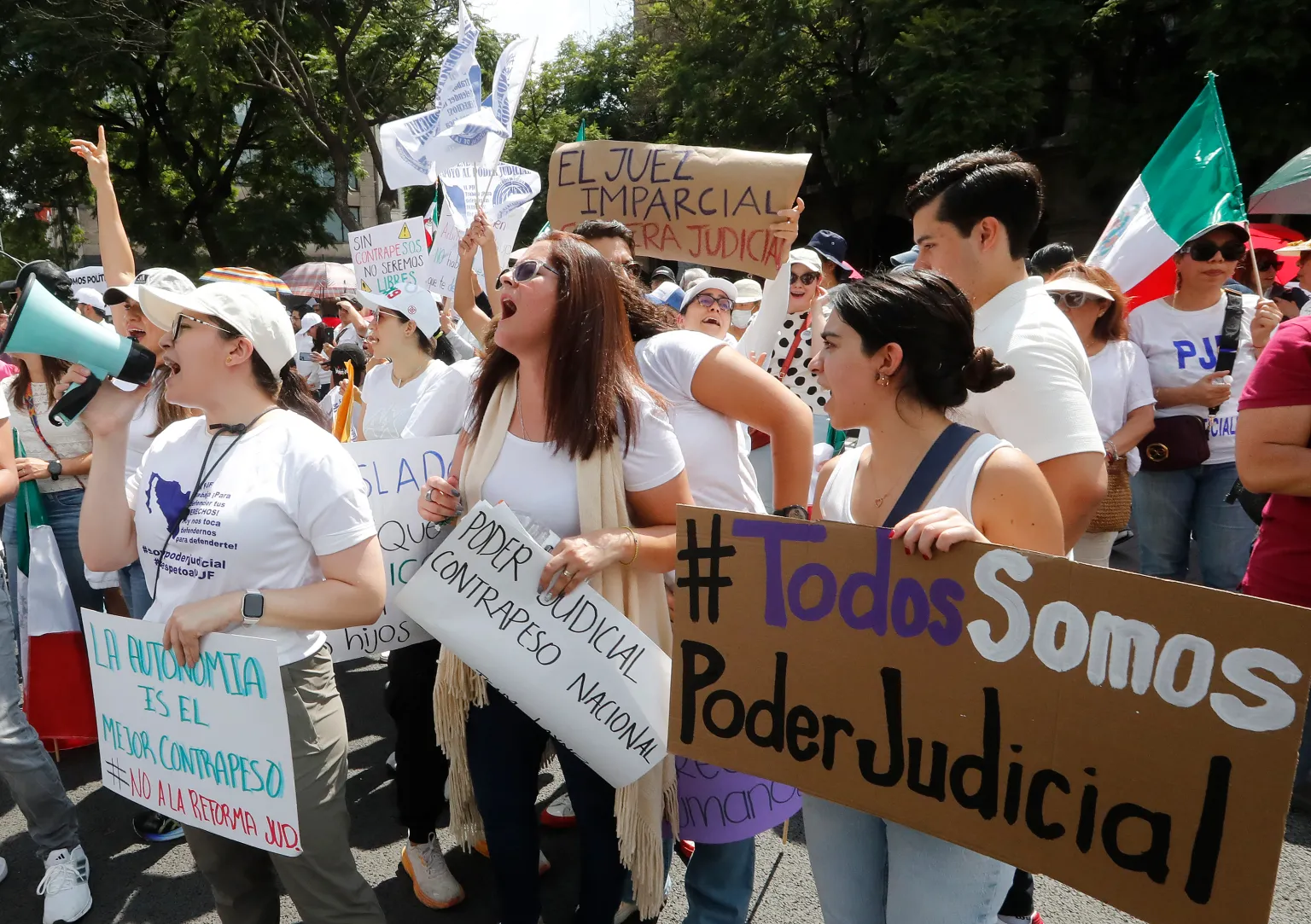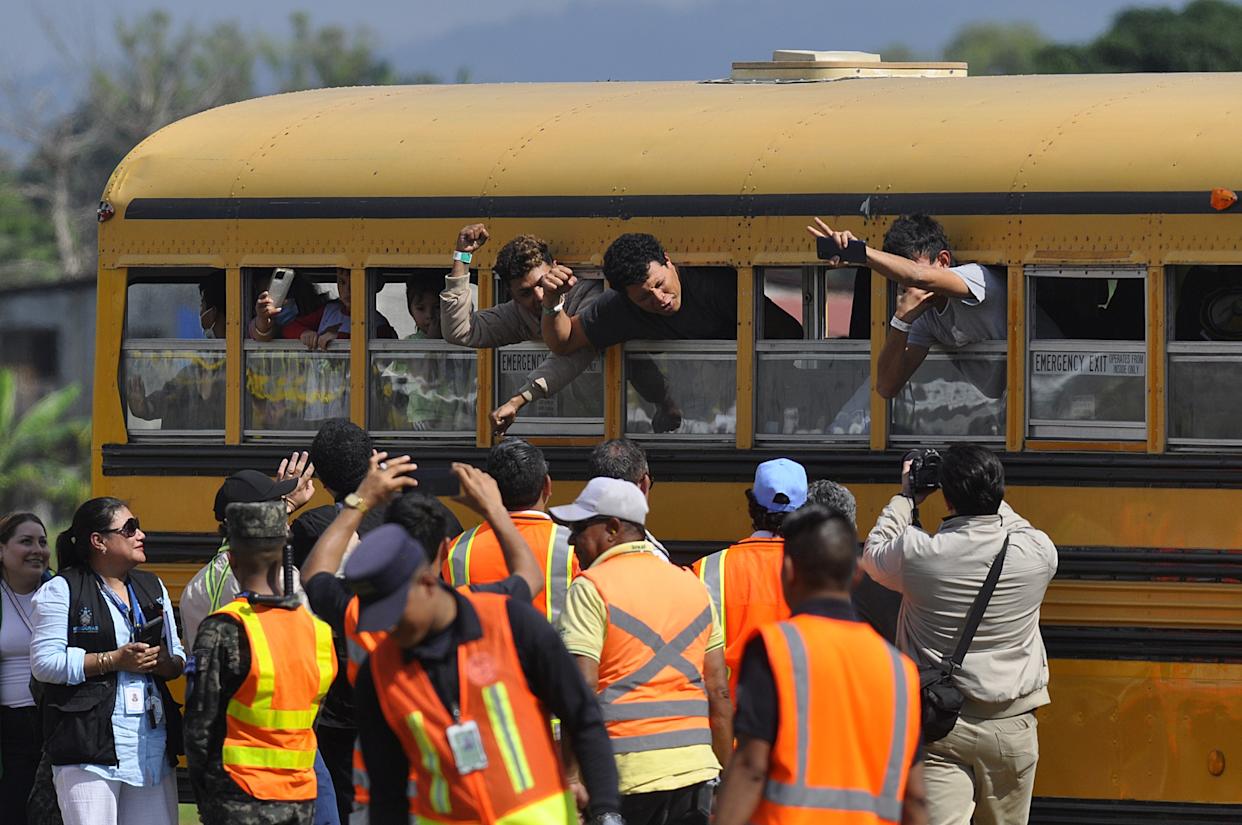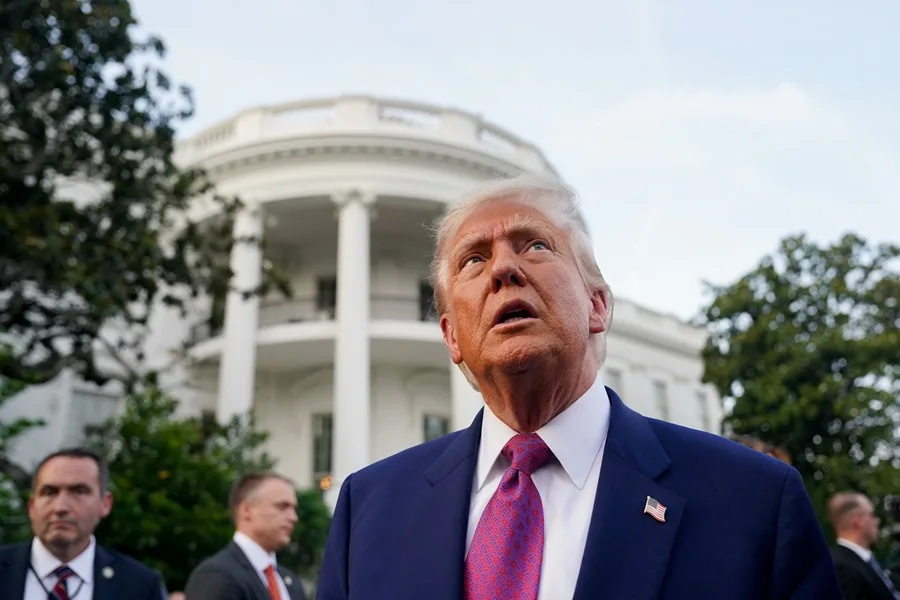International
The Supreme Court of Mexico opens a debate to review the controversial reform of the Judiciary

The Supreme Court of Justice of the Nation (SCJN) of Mexico opened a controversy this Thursday to decide whether it has the power to review the constitutional reform to the Judiciary of the Federation (PJF), which seeks to elect judges and magistrates by popular vote.
The decision, which was given after a majority vote of eight votes to three, admitted one of the challenges of judges and magistrates against the aforementioned reform, to analyze whether the high court can review the constitutional amendment.
The controversial judicial reform, promoted by former President Andrés Manuel López Obrador (2018-2024) and promulgated on September 15, has raised criticism from various international organizations that claim that the rule of law in the country is at risk.
The Plenary of the SCJN agreed to open a dispute of those provided for in the Organic Law of the PJF, originally created to resolve conflicts within said Power.
“For this Plenary, there is no doubt that fraction XVII of article 11 is the ideal way to process a petition such as the one that motivated this consultation, that is, one in which justice makers ask this Court to verify whether the reform of the Constitutional text published on September 15, 2024, is compatible or not with judicial guarantees and principles, including the division of powers, judicial independence, as well as those inherent to the Constitutional Rule of Law,” the judgment points out.
The aforementioned amendment will cause more than 1,600 judicial positions to be elected by popular vote, in elections, a system that leaves the members of the PJF in a situation of uncertainty.
Can the reform of the Judiciary in Mexico be reviewed?
Prime Minister Piña Hernández, rapporteur Juan Luis González Alcántara, Jorge Mario Pardo Rebolledo, Margarita Ríos Farjat, Alfredo Gutiérrez Ortiz Mena, Luis María Aguilar Morales and Javier Laynez Potisek voted in favor of the project.
While ministers Lenia Batres, Yasmin Esquivel and Loretta Ortiz, related to former President López Obrador, voted against.
Batres defended that the Supreme Court “does not have the power to submit to review changes to the Constitution approved by the Legislative Branch because it would violate the principle of constitutional supremacy, as well as the division of powers and the Constitutional Rule of Law.”
The minister also said that the SCJN “is attempting a coup d’état,” it seeks to act in a tyrannical and despotic way since it intends to give itself the power to revise the Mexican Constitution.
Sheinbaum supports the reform
The president of Mexico, Claudia Sheinbaum, defended last Tuesday, during her inauguration, the reform of the Judiciary and pointed out that it is not “authoritarianism” but, in essence, it is democratic.
“How is a decision going to be authoritarian that, in essence, is democratic and allows the people to decide?” the president said during her speech in the Mexican Congress.
He said that the objective is to end corruption in the Judiciary and for this, he recalled, there will be a single call in addition to a selection committee of candidates to ensure that they meet the requirements.
“And who will decide? It will be the people,” he emphasized.
He also took the opportunity to tell the workers of the Judiciary that their rights and salaries “are fully safeguarded.”
International
Meta Says Russia Seeks to Ban WhatsApp for Defending Secure Communication

U.S. tech giant Meta, the parent company of WhatsApp, said that Russia is seeking to ban the messaging app because it “challenges government attempts to violate people’s right to secure communication.”
Russian authorities have encouraged citizens to switch to state-backed applications, and in August they already blocked WhatsApp’s calling feature.
On Friday, the communications regulator Roskomnadzor claimed that the platform was being used to “organize and carry out terrorist acts in the country, recruit perpetrators, and facilitate fraud and other crimes.”
“If the messaging service does not comply with Russian law, it will be completely blocked,” the regulator warned.
WhatsApp remains one of Russia’s most widely used messaging services, alongside Telegram.
Moscow is pressuring both platforms to grant authorities access to user data upon request for investigations into fraud and activities the government labels as “terrorist.”
Human rights advocates fear the demand could be used to target critics of the Kremlin, President Vladimir Putin, or the war in Ukraine.
International
Archbishop Wenski criticizes Trump’s deportation policies, calls for stronger push for reform

The Archbishop of Miami, Thomas Wenski, has called for increased pressure on the U.S. Congress to advance comprehensive immigration reform and criticized President Donald Trump’s mass deportation policies, arguing that they “do nothing to help.”
“We need to apply more pressure on Congress so lawmakers can make the necessary changes. It is also important for the Administration to listen to our voice. We do not want to be anyone’s enemy—we are Americans,” Wenski said in an interview with EFE.
The religious leader, who heads one of the dioceses with the largest Latino and Haitian populations in the United States, issued a call to defend the rights of migrants. He also emphasized that the U.S. Conference of Catholic Bishops (USCCB) has maintained a strong and public stance in favor of migrants for decades.
International
Trump relaunches diplomatic push to finalize U.S.-Backed peace plan for Ukraine War

U.S. President Donald Trump announced on Tuesday that his diplomatic team will resume meetings with delegations from Russia and Ukraine in an effort to pressure both sides to accept the peace plan proposed by Washington to end the war in Ukraine.
As part of this new round of talks, U.S. Special Envoy Steve Witkoff will travel to Moscow to meet with Russian President Vladimir Putin. Meanwhile, Army Secretary Dan Driscoll will hold discussions with Ukrainian representatives to narrow differences on the remaining points of the agreement.
Trump also confirmed his intention to meet personally with Ukrainian President Volodymyr Zelensky and with Putin, though he emphasized that such meetings will only take place “when the agreement is fully finalized or in its final stage.”
The president claimed that his administration has made “tremendous progress” toward resolving the conflict and reiterated that the war “never would have started” if he had been in the White House at the onset of the crisis.
The U.S.-backed peace plan consists of 28 points and has been revised following feedback from both sides. According to Trump, only “a few points of disagreement” remain under active discussion.
One of the most controversial aspects of the proposal is the suggestion that Ukraine cede parts of the Donbas region to Russia and limit the size of its armed forces. Kyiv is working closely with Washington to soften these clauses in search of an arrangement that does not compromise its sovereignty or security.
With this diplomatic push, Trump aims to solidify his role as the main mediator in the conflict and steer the war toward a political resolution after years of devastation, humanitarian crisis, and rising global geopolitical tensions.
-

 International4 days ago
International4 days agoTrump relaunches diplomatic push to finalize U.S.-Backed peace plan for Ukraine War
-

 International4 days ago
International4 days agoBolsonaro misses appeal deadline, faces imminent prison order by Brazil’s Supreme Court
-

 International4 days ago
International4 days agoMan pleads not guilty in Liverpool parade incident that injured more than 130
-

 Central America3 days ago
Central America3 days agoPanama reinforces security with new helicopters and Super Tucano Aircraft purchases
-

 International4 days ago
International4 days agoMacron to announce new voluntary military service amid rising security concerns in Europe
-

 Central America3 days ago
Central America3 days agoTrump urges hondurans to back conservative candidate Nasry Asfura in november elections
-

 Central America19 hours ago
Central America19 hours agoTrump Pardons Former Honduran President Hernández and Warns of Aid Cuts Ahead of Election
-

 International3 days ago
International3 days agoArchbishop Wenski criticizes Trump’s deportation policies, calls for stronger push for reform
-

 Central America3 days ago
Central America3 days agoWashington calls for oversight as Honduras faces allegations of electoral interference
-

 International19 hours ago
International19 hours agoMeta Says Russia Seeks to Ban WhatsApp for Defending Secure Communication






























